MAiD
Ontario tracked 428 cases of potentially illegal euthanasia but never notified police: report

From LifeSiteNews
“We see a pattern of not following legislation, a pattern of not following regulation, and frankly we can’t just continue to do education to those folks if they’re directly repeating stuff that we’ve brought to their attention”
Ontario euthanasia regulators have reportedly tracked 428 cases of potential legal violations, but failed to refer a single case to law enforcement.
According to leaked information published November 11 by The New Atlantis, the Ontario Office of the Chief Coroner has counted 428 cases of non-compliance with Medical Assistance in Dying (MAiD) regulations since 2017, “ranging from broken safeguards to patients who were euthanized who may not have been capable of consent.”
“We see a pattern of not following legislation, a pattern of not following regulation, and frankly we can’t just continue to do education to those folks if they’re directly repeating stuff that we’ve brought to their attention,” Dirk Huyer, head of Ontario Office of the Chief Coroner, said in the documents.
When MAiD was first introduced in 2016, it was initially only available to those who were terminally ill, and those killing the patients had to follow a series of steps before administering the lethal drugs. Later, in 2021, Prime Minister Justin Trudeau’s government expanded the deadly practice to be available to those who are not at risk of death but who suffer solely from chronic illness.
The New Atlantis’ report cites documentation from 2018 which shows that Huyer, despite admitting regulations are routinely ignored, still stood by the MAiD regime, attesting that “[e]very case is reported. Everybody has scrutiny on all of these cases. From an oversight point of view, trying to understand when it happens and how it happens, we’re probably the most robust in Canada.”
However, in the summer of 2017, just a year after MAiD was legalized, Huyer co-authored a paper which talked about the high rate of non-compliance among euthanasia providers, a trend that only seems to have continued.
“The MAID regulations require clinicians to notify the pharmacist of the purpose of the MAID medications before they are dispensed,” the paper noted, adding that only 61% of the physicians followed the rule.
Additionally, many physicians disregarded the 10-day waiting period between requesting MAiD and receiving the drug. Doctors argued that they expedited the process due to “persistent requests” or an “inconvenient timing of the death in relation to other familial life events.”
By 2018, the problem had developed into what Huyer described as “a pattern of not following legislation,” causing him to implement a new system “to respond to concerns that arise about potential compliance issues.”
But in 2023, his office raised concerns for a quarter of all euthanasia “providers” in Ontario. Concerns included offering MAiD to dementia patients and those with cognitive impairment.
In 2023 alone, the office found 178 compliance problems, an average of one every second day. Now, the total number of compliance issues sits at 428.
While the first cases of non-compliance were brought to light in 2017, the police have never been contacted according to The New Atlantis. In fact, the numbers are rarely made public, and when they are it is often through the quiet publishing of data in obscure reports.
As for the MAiD providers who failed to follow the regulations, instead of being reported to police by regulators, they received an “informal conversation” or an “educational” or “notice” email.
As disappointing as it is that euthanasia providers’ disregard of patients had little to no consequences, it is in keeping with the culture of death created by legalizing MAiD in the first place.
Since there can be no such thing as “moral” euthanasia, it comes as little surprise to pro-lifers that regulations are not followed. Indeed, in July, euthanasia provider and abortionist Ellen Wiebe enthusiastically revealed that she has killed over 400 patients under Canada’s permissive regime, a statement that drew international headlines with people concerned about the seeming nonchalant treatment of human life.
However, there are some doctors who have realized the dangers of MAiD and have questioned the morality of the practice, at least in certain cases, with some physicians noting that many patients choosing euthanasia are doing so principally because they are impoverished or lonely.
The most recent reports show that MAiD is the sixth highest cause of death in Canada. However, it was not listed as such in Statistics Canada’s top 10 leading causes of death from 2019 to 2022.
When asked why MAiD was left off the list, the agency said that it records the illnesses that led Canadians to choose to end their lives via euthanasia, not the actual cause of death, as the primary cause of death.
According to Health Canada, in 2022, 13,241 Canadians died by MAiD lethal injections. This accounts for 4.1 percent of all deaths in the country for that year, a 31.2 percent increase from 2021.
International
Daughter convinces healthy father to die in double assisted suicide with mother

From LifeSiteNews
By Cassy Cooke
After her parents both became seriously ill and her mother wanted to undergo assisted suicide, a Washington woman convinced her father to die also.
Key takeaways
- Corinne Gregory Sharpe spoke to PEOPLE about her experience convincing her parents to undergo assisted suicide together.
- After her mother was diagnosed with aortic stenosis in her 90s, she lived for a few more years before her health began to decline. At that point, she said she wanted to die by assisted suicide.
- Her father did not have a health condition outside of having previously had a stroke; however, he was nervous to live without his wife. Sharpe convinced him of a “solution” – to kill himself alongside her mother.
- Couple assisted suicide has become romanticized by the media.
The details
Corinne Gregory Sharpe spoke with PEOPLE about her efforts to convince her father to undergo assisted suicide alongside her mother. She said her family had always been close, so when her mother became ill, her father was nervous to live without her.
Sharpe’s mother was first diagnosed with aortic stenosis in 2018 at the age of 92 and given less than two years to live if she did not undergo surgery.
“And even if she had the procedure, there was no guarantee that she was gonna live any longer,” Sharpe said. “So her attitude was sort of like, well, let’s just kind of let things go as they go.”
READ: Colorado gave over 500 people assisted suicide drugs solely for eating disorders in 2024
But Sharpe’s mother didn’t die within those two years. In fact, it was three years later that her health began to decline, only after she fell and hit her head. Shortly after that, Sharpe’s father appeared to suffer small strokes. “So now I have two parents in medical care,” Sharpe said.
Her parents were able to be at a rehabilitation facility together, but Sharpe said they were “losing the will to live,” so she brought them back home. Doctors recommended hospice, but her mother decided she wanted to undergo assisted suicide, which left her father distraught. Sharpe came up with an “interesting” solution.
“I had a very interesting, serious heart-to-heart conversation with him one evening after my mom had gone to bed,” she continued. “And he was just panicked like, ‘What happens to me if she goes first?’ That’s always been a concern of his. He couldn’t see a scenario where he would want to continue if mom was gone.”
She added, “He’s always been afraid of dying. But I think he was more afraid of being left alone. He was like, ‘Well, if she’s gonna go and I have the option to go at the same time, then I’m getting on that horse.’ So I was like, look, we’ll figure something out.”
At this point, her father was not dying, and if he suffered another stroke, doctors believed he could end up incapacitated, but not terminally ill. Yet Sharpe was able to get her father approved for assisted suicide, calling it “a race” to do so.
Sharpe spent what would be the last few weeks of her parents’ lives hosting family dinners, making them their favorite meals, and sharing memories as a way to “repay my parents for everything they’d done for me.” It sounds nice, but there’s no need for an adult child to wait until she knows her parents are dying to do such things for them.
When the drug powder arrived, Sharpe took a selfie with the delivery man and then stuck the drug on a shelf, where it feasibly could have been accessed by anyone. She then joked about choosing Friday the 13th to die, which is when her parents ultimately took the drugs – Friday, August 13, 2021.
“The counselors prepared the cocktail, we sat around and shared some private moments together. They got to sit in their own bed and hold hands with each other and talk before they were able to take the meds,” she said. “We put music on and they took the cocktail. Then we poured a glass of wine and we had a final toast. About 10 minutes after they drank it, they went to sleep.”
Zoom out
It has become increasingly common and romanticized for elderly couples to be euthanized together. This includes murder-suicides and those who opt to die together simply because they are elderly.
But the reality of assisted suicide is that it may not be as peaceful and romantic as many have been led to believe.
As Dr. Joel Zivot, an associate professor of anesthesiology and surgery at the Emory School of Medicine and an expert on “physician participation in lethal injection,” previously explained, assisted suicide can be excruciating, even if it doesn’t appear to be.
“[F]or both euthanasia and executions, paralytic drugs are used,” he wrote in an op-ed for the Spectator. “These drugs, given in high enough doses, mean that a patient cannot move a muscle, cannot express any outward or visible sign of pain. But that doesn’t mean that he or she is free from suffering.”
He added, “People who want to die deserve to know that they may end up drowning, not just falling asleep.”
Furthermore, a study in the medical journal Anaesthesia found that prolonged, painful deaths from assisted suicide and euthanasia were far from rare, with a considerable number of patients taking 30 hours to die, though some took seven days. Experiments with assisted suicide likewise have been painful, with one drug cocktail “burning patients’ mouths and throats, causing some to scream in pain.” The same drugs labeled as too inhumane to be used for lethal injection are used in assisted suicide.
The bottom line
Suicide is not dignified, peaceful, or romantic. Efforts are made to prevent suicide unless the person in question is elderly, ill, or disabled. And then, it’s made to appear noble and romantic to take your own life.
Reprinted with permission from Live Action.
Health
Colorado gave over 500 people assisted suicide drugs solely for eating disorders in 2024

Fr0m LifeSiteNews
The lawsuit says Colorado’s assisted suicide law violates federal protections by allowing physicians to prescribe lethal drugs to some disabled patients under circumstances where others would be directed to mental health care
Doctors in Colorado are pushing assisted suicide on hundreds of patients solely because they suffer from eating disorders, according to a patients’ advocate sharing the harrowing story of one such case.
Writing in the Denver Post, Patient Rights Action Fund and Institute for Patient Rights executive director Matt Vallière tells the story of his friend Jane Allen, who battled anorexia “most of her life,” who in 2018 was diagnosed with “terminal anorexia,” a relatively recent diagnosis which has been criticized as overly broad and dangerous.
Her eating disorder doctor, Jane wrote, “would ‘make an exception’ for me and ‘allow’ me to die, if that was my choice. It didn’t feel like my choice – I felt coerced and spent an incredibly agonizing months in an assisted living facility.” She eventually received the suicide drugs, but was saved by her father winning a guardianship order and having the drugs destroyed.
“I ate just enough to not die right away. And then I ate more,” Jane wrote. “I weaned off the morphine and all the other hospice drugs that kept me in such a fog. I was getting better, and then I was told that I was too much of a liability and dropped from the clinic. I moved from Colorado to Oregon. I have a job that I love, a new puppy, and a great group of friends. I’m able to fuel my body to hike and do the things I love. I’m repairing my relationship with my family, and I have a great therapist who is helping me process all of this. Things obviously aren’t perfect, and I still have hard days. But I also have balance, and flexibility, and a life that is so much more than I was told would ever be possible for me.”
Jane ultimately passed away due to complications from her years of anorexia, which Vallière wonders could have been prevented by not detouring her down the terminal anorexia route. Regardless, her story details how easily similar cases can end in suicide for people without people willing to fight to give them hope. Live Action notes that last year, Colorado saw a record number of people, 510, prescribed suicide drugs solely for dietary disorders.
“What we do know is that these laws are not so rosy as the propaganda would have you believe,” Vallière writes, adding “there has been and will be more collateral damage in people like Jane or Coloradan Mary Gossman, who was told by a nationally renowned Denver eating disorder treatment facility, ‘there’s nothing we can do for you,’ which qualified her for lethal drugs under the law. She’s in a better place now and has joined as a plaintiff in a lawsuit to overturn the law. So, I ask: how many collateral deaths are acceptable to you?”
That lawsuit says that Colorado’s so-called “medical aid-in-dying” or assisted suicide law violates federal protections by allowing physicians to prescribe lethal drugs to some disabled patients under circumstances where others would be directed to mental health care, by “assum[ing] that a request for assisted suicide is not an indication of a mental disorder, when other Colorado laws make precisely the opposite assumption for virtually everyone else.”
Twelve U.S. states plus the District of Columbia allow assisted suicide. In April, however, a bill to legalize euthanasia failed in Maryland.
As Vallière has previously argued elsewhere, current euthanasia programs in the United States constitute discrimination against patients with life-threatening conditions in violation of the Americans with Disabilities Act, as when a state will “will pay for every instance of assisted suicide” but not palliative care, “I don’t call that autonomy, I call that eugenics.”
Live Action’s Bridget Sielicki further notes that “because a paralytic is involved, a person can look peaceful, while they actually drown to death in their own bodily secretions. Experimental assisted suicide drugs have led to the ‘burning of patients’ mouths and throats, causing some to scream in pain.’ Furthermore, a study in the medical journal Anaesthesia found that a third of patients took up to 30 hours to die after ingesting assisted suicide drugs, while four percent took seven days to die.”
Support is available to talk to those struggling with thoughts of ending their lives. The Suicide & Crisis Lifeline can be reached by calling or texting 988.
-
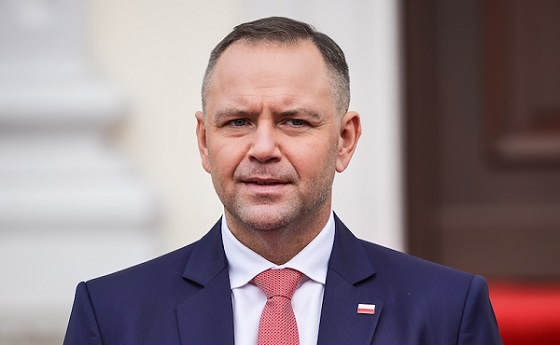
 International2 days ago
International2 days agoPoland’s president signs new zero income tax law for parents with two children
-
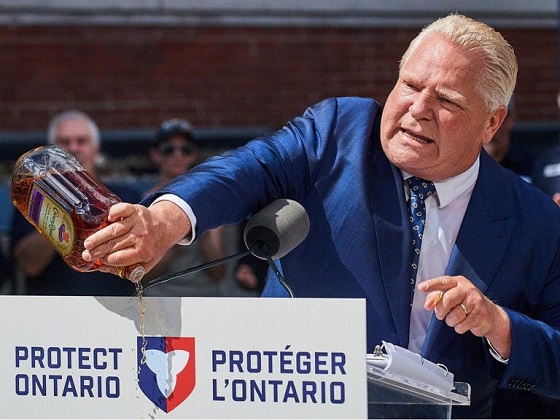
 Business1 day ago
Business1 day agoFord’s Whisky War
-
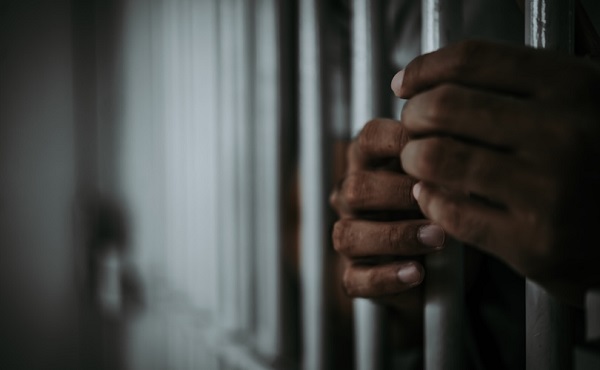
 International2 days ago
International2 days agoAustralian territory bans men from women’s prisons in national first
-
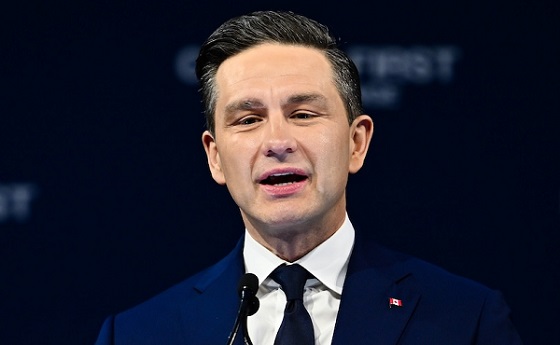
 National2 days ago
National2 days agoPoilievre accuses Canada’s top police force of ‘covering up’ alleged Trudeau crimes
-

 Agriculture11 hours ago
Agriculture11 hours agoIs the CFIA a Rogue Agency or Just Taking Orders from a Rogue Federal Government?
-
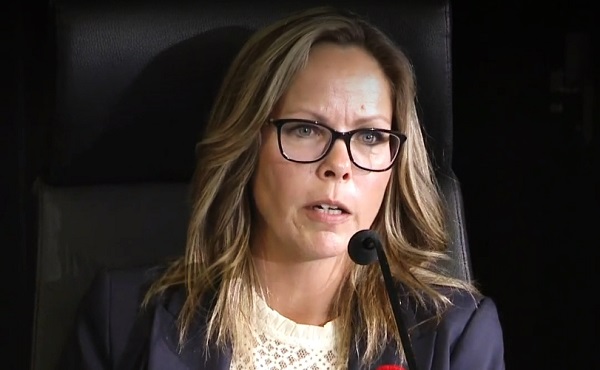
 COVID-192 days ago
COVID-192 days agoFreedom Convoy leader Tamara Lich says ‘I am not to leave the house’ while serving sentence
-
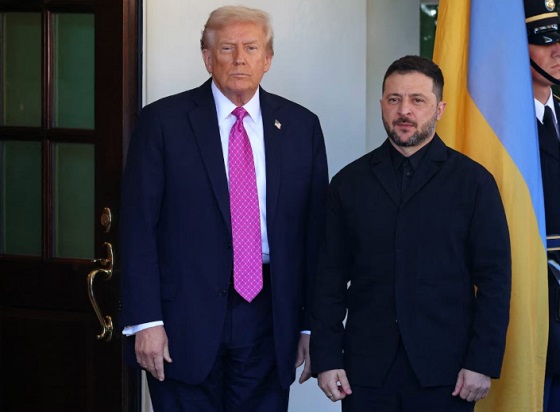
 Focal Points1 day ago
Focal Points1 day agoTrump Walks Back His Tomahawk Tease from Zelensky
-

 Automotive1 day ago
Automotive1 day ago$15 Billion, Zero Assurances: Stellantis Abandons Brampton as Trudeau-Era Green Deal Collapses






